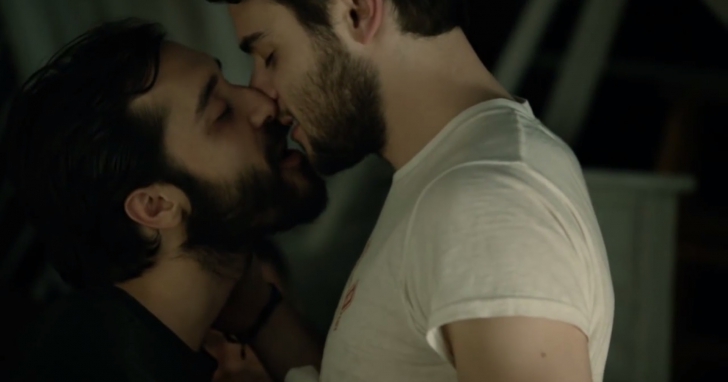
There’s apparently not enough to say about gay beards, and no, I’m not talking about girls who go on dates with gay guys this time.
After my blog post on the historic significance of beards, based on a wonderful Atlantic piece, another rumination on facial hair and gay identity was passed along to me.
Gay English blogger PH Davies writes of a recent trip to Shoreditch, an area of London comparable to Toronto’s west end, from the sounds of it. Davies describes the men who were out and about in the district: “All of them had significant facial hair and they were covered in a cornucopia of intricate body art. This trend has, of course, been apparent on catwalks and in magazines for some time now, but to see so many bearded and tattooed men in one place was rather a shock. London is an intense melting pot for what’s going on in fashion generally and there was no mistaking the fact that being inked, having a beard, wearing a denim shirt, lots of tweed, braces, and boots has become the uniform of the moment.”
In short, Davies decides, the style for guys these days is to look like a gay bear.
Davies calls it the “Mumford & Sons effect”; others have described it as the hipster look. Whatever it is, it is being donned by gay and straight guys alike, and not just in Canada and the UK.
As Davies learned, it’s also something people care very strongly about. The blog post, written last November, recently went viral, and he wrote a follow-up piece describing how he recently decided to grow a beard himself:
“[P]erhaps I am jumping on the bandwagon, but the I’ve always had some facial hair and like my father and grandfather before me, I am only doing what comes naturally to men in my family. The beard has become so ubiquitous even in my place of work, that to not have a beard is a sign of severe failure, especially if you are a man over thirty. It’s a way of distinguishing the men from the boys.”
His thoughts get at my interest in the beard zeitgeist. In my blog post I posited that the surge in beard popularity, visible not only on the streets, but in fashion and on TV (HBO’s Looking, for example, which I’ve been reviewing on my non-Xtra blog), is an unspoken, aggressive form of reclaiming masculinity in society. Again, I’m not suggesting that the mere presence of facial hair is reason to suspect someone of being anti-woman or a so-called men’s rights activist, but I find it increasingly easy to connect the dots in a global society that seems to be ever swinging toward the right, and the right usually means “men’s might.”
It’s certainly a hairy issue.

 Why you can trust Xtra
Why you can trust Xtra


